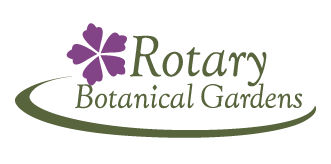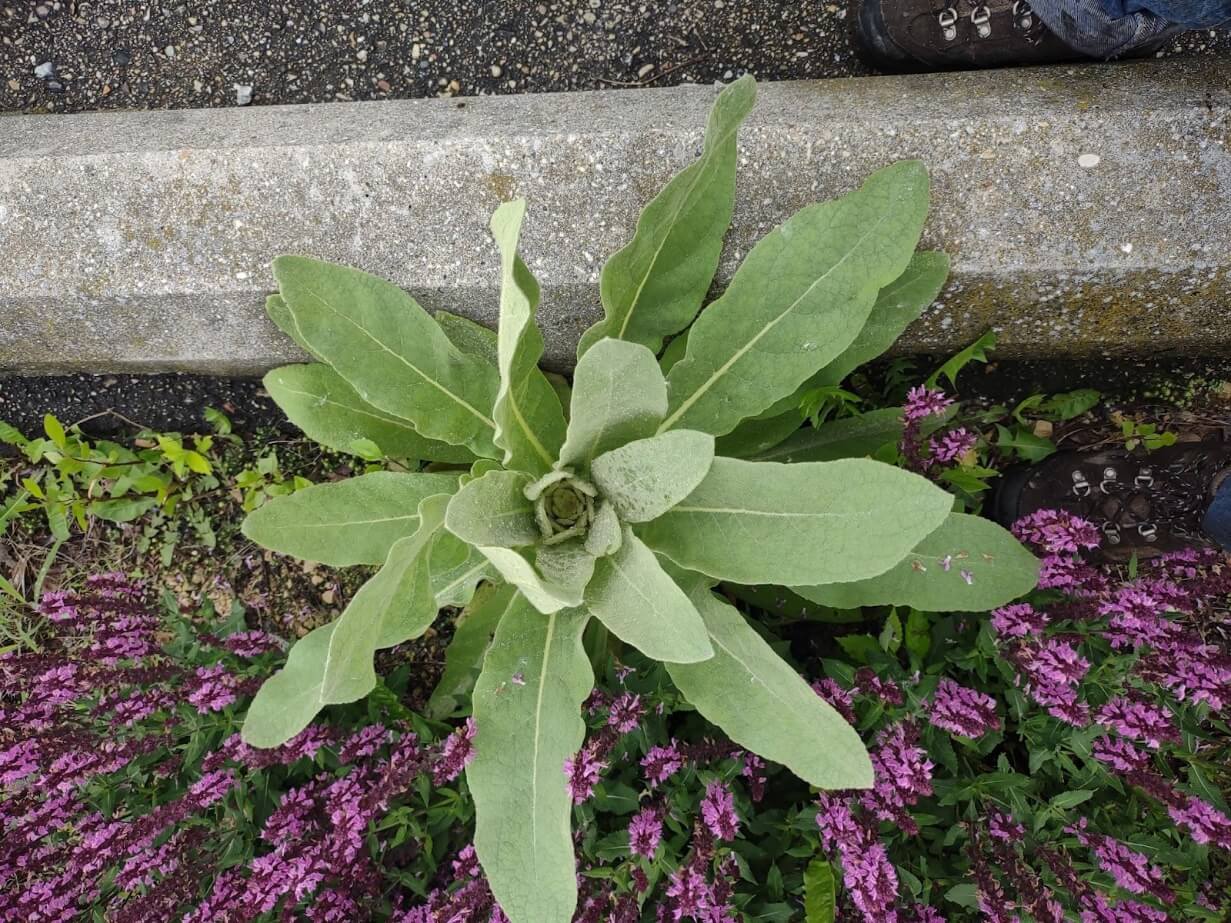
Foraging Weeds in Your Garden
Weeds are more than just ‘pests’
This post was written by Emma Wallace, RBG Horticultural Intern

In the past, Indigenous peoples of North America made use of the same plants that we pull out of our gardens and mindlessly toss aside as ‘weeds.’ We all dread pulling these pests, but if we change our perspective, they can be an additional source of food and medicine from our gardens.
My name is Emma Wallace, and I am the summer 2022 horticultural intern at the Rotary Botanical gardens. I am a senior Horticulture student at the University of Wisconsin Platteville, and some of my passions are sustainability and permaculture in modern gardening.
Something I have become increasingly excited about is foraging. Many of the amazing plants I find on forays are extremely easy to identify and collect, and many can be found in your vegetable garden as ‘weeds.’
So, what even is a weed? A weed is any plant that is unwanted in a specific area or creates an issue for cultivated plants. The emphasis I am going to focus on is the unwanted part.
Now I’m not saying you need to love chickweed or thistles, but it is important to realize that all plants have different functions than just simply being a chore to pull. Today we will be looking at ways you can use ‘weeds’ in different ways than you may have previously considered, specifically in the kitchen.
Mullein (Verbascum thapsus)
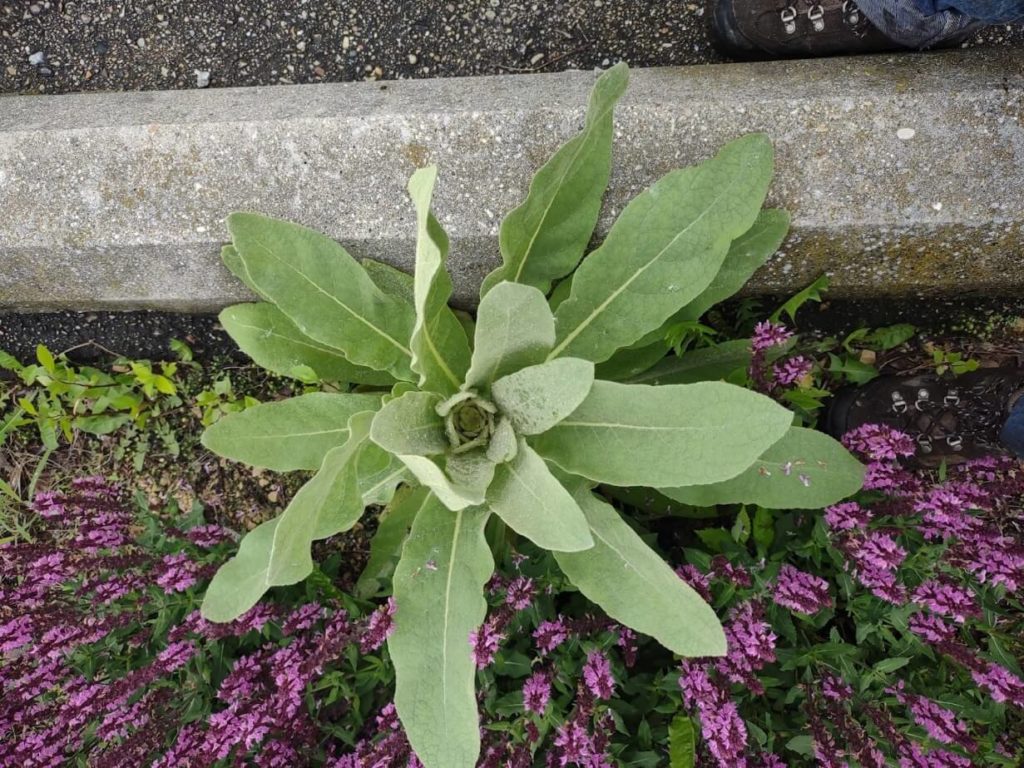
First up is Mullein, Verbascum thapsus. You may have seen this fuzzy friend before and tossed it without knowing that this plant is better than any cold medicine on the market.
Mullein has long been used by indigenous peoples in the Americas, as well as the Romans and the Zuni people, for a whole list of uses. My personal favorite use of mullein is as a cough medicine. It has long been used to treat asthma, pneumonia, as well as the common cold, to ease coughing and lung ailments.
In addition, Western colonizers used to stuff their shoes with mullein to keep warm in the freezing winters, and the Zuni peoples used to as skin salve.
Harvesting Mullein is simple. First off, you must find it. It loves open, disturbed areas and is quite easy to spot, as it gets very wide and very tall.
You will notice a rosette shaped plant with fuzzy, silver leaves arranged radially from the center of the plant. Once you have properly identified the plant, remove a few leaves from the top of the plant, as the bottom ones are older and less nutritious.
After you harvest it, you have a few options. The Native Americans generally used to smoke it in order to get the medicine into the lungs directly, however I do not recommend this method unless you already are a smoker of some nature, as it may irritate your lungs if you are not used to inhaling smoke.
The most popular modern method of consuming is by adding it to tea. To enjoy, simply add dried or fresh leaves to near boiling water, as well as any other tea you might enjoy.
Dandelions (Taraxcum officinale)
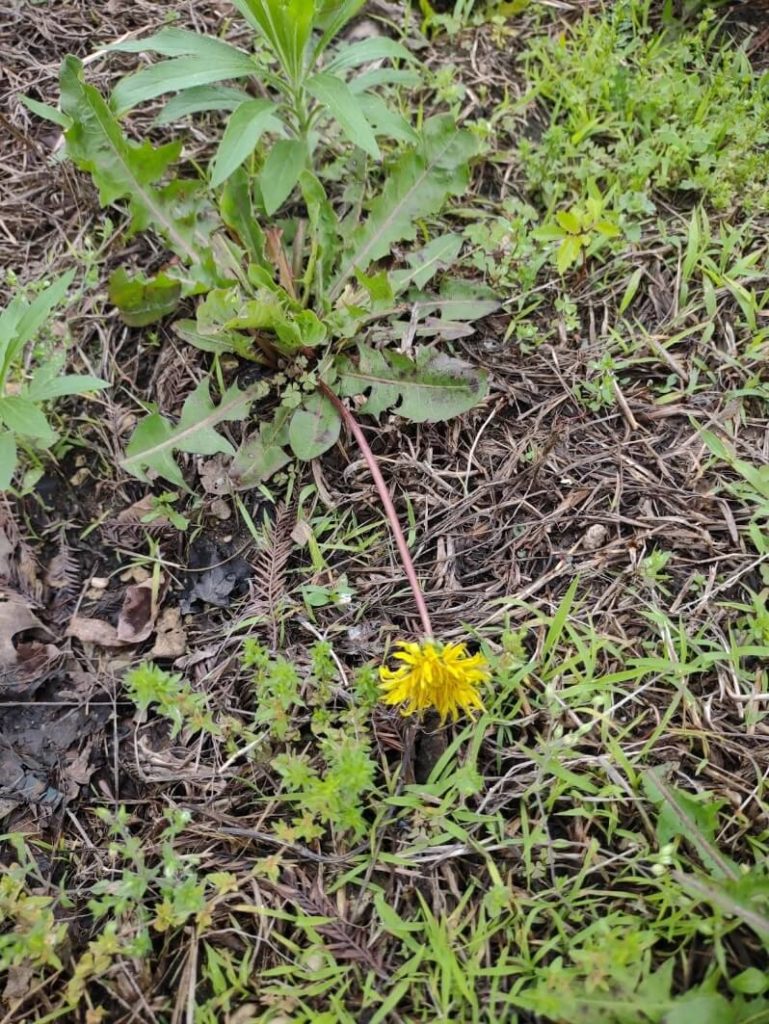
This next one, I don’t even need to list identification features; you already know it. One of the most hated weeds, dandelions, Taraxcum officinale, are a nutritional and medicinal powerhouse.
Everything but the stem can be used in very interesting ways. The roots can be roasted and ground into a coffee replacement, the leaves can be used as a bitter green, and the flowers can be made into an insurmountable number of things such as tea, salve, deep fried fritters, and so on.
Personally, I like to let this weed grow freely in my garden as an addition to my staple tea garden plants. Dandelions are extremely good for you. They are high in carotenoids, vitamin K, vitamin A, B12, and honestly an entire laundry list of others.
I think they are also one of the tastiest and most versatile weeds you can find growing in your garden. Dandelion wine, anyone?
White clover (Trifolium repens)
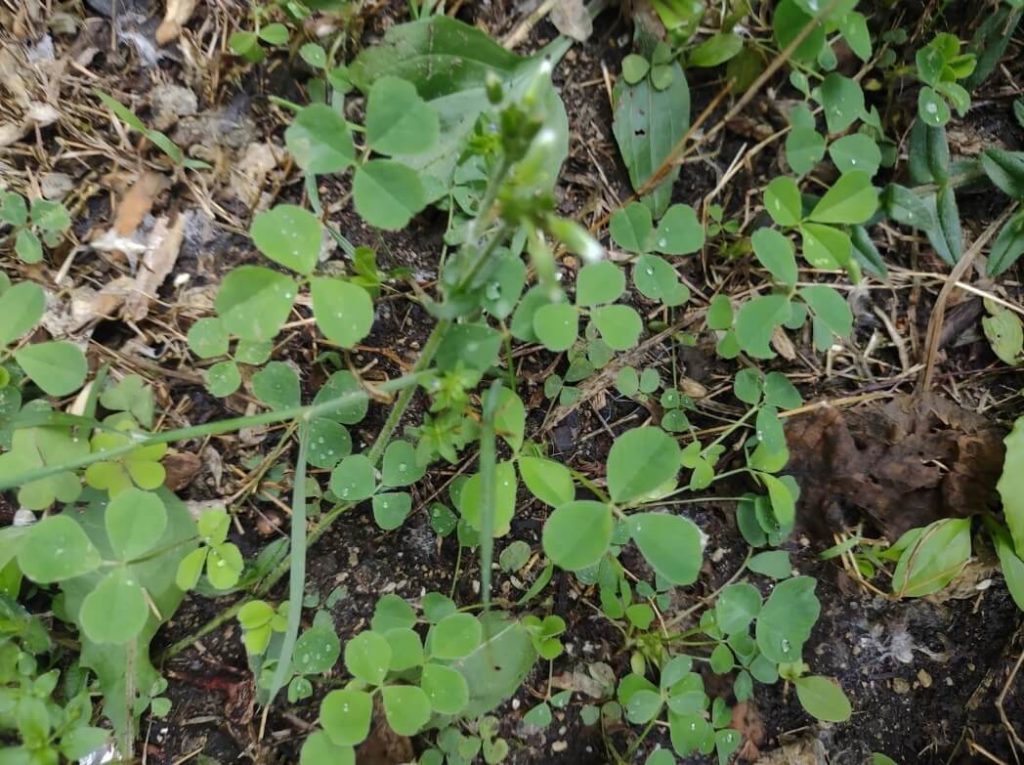
This plant has another flower you can easily recognize, white clover Trifolium repens. Easily distinguishable by its famous tri-palmately compound, shamrock leaves and shaggy white flower, white clovers are another fantastic edible that I can guarantee you are already pulling out of your garden
The leaves are said to taste like vanilla, and many make jams and sweets from the cute flowers. A similar situation applies to its cousin, the Red Clover, which has a similar leaf shape with an additional silver V marking, and it has larger pink flowers that have the same shape as the white clovers.
Broadleaf Plantains (Plantago major)
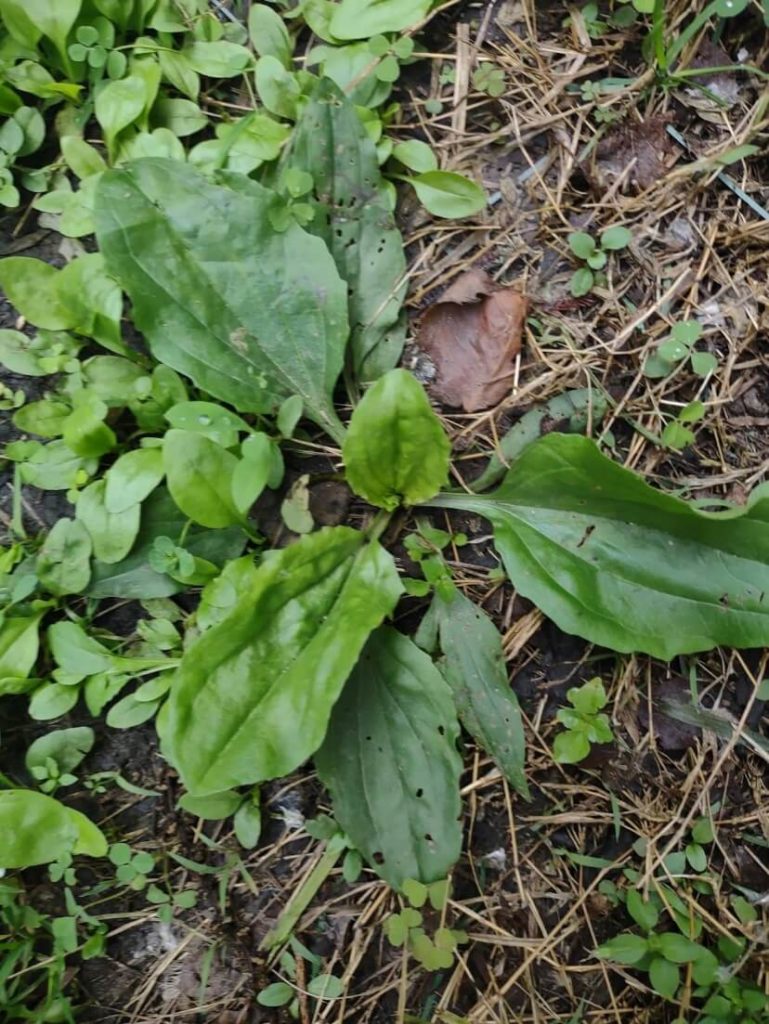
Next, we have Broadleaf Plantains, Plantago major. No, not the banana kind, but the kind you see in the cracks of your sidewalk that no matter how much you pull them they manage to find their way back.
Think of plantains as free spinach. It’s abundant, and tastes like nothing, perfect for throwing into soups or salads as a great source of vitamins A, C, K, and iron.
Plantains have circular leaves with palmate veination. They stay about the size of your hand and send up a tall stem with a whitish, cone shaped flower. They can be used any way spinach or kale is used and can also be infused into a salve to soothe skin irritations.
Burdock (Articum spp.)
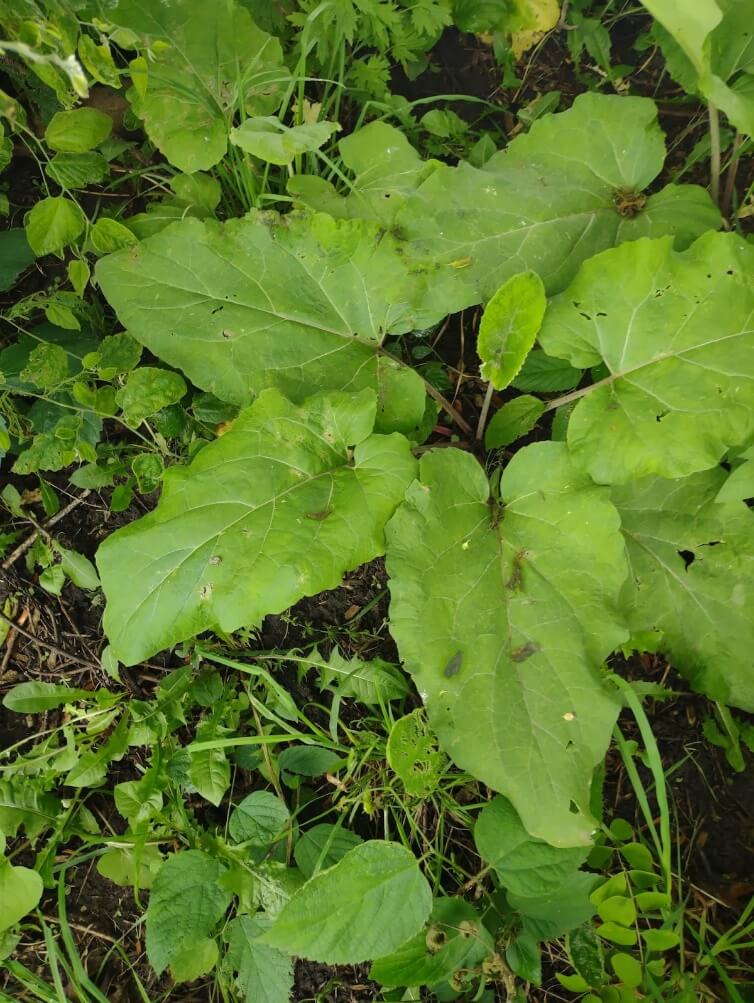
This next plant is another one you are very familiar with, but probably couldn’t identify the plant if you saw it without its hallmark: the burrs. Burdock, Articum spp., is the plant responsible for the Velcro-like burrs you find all over yourself after a hike or day in the garden that seemingly come out of nowhere.
This plant is extremely easy to identify when the seed pod burrs are on it, but also when it does not. People may think this plant is some form of wild Rhubarb because of its thick, U-shaped stems and lanceolate leaves.
The roots, leaves, and petioles are all edible, the most consumed being the roots, especially in Asia, where it is a staple food. The roots are used much like carrots or other root vegetables to create a unique flavor.
Garlic Mustard (Alliaria petiolata)
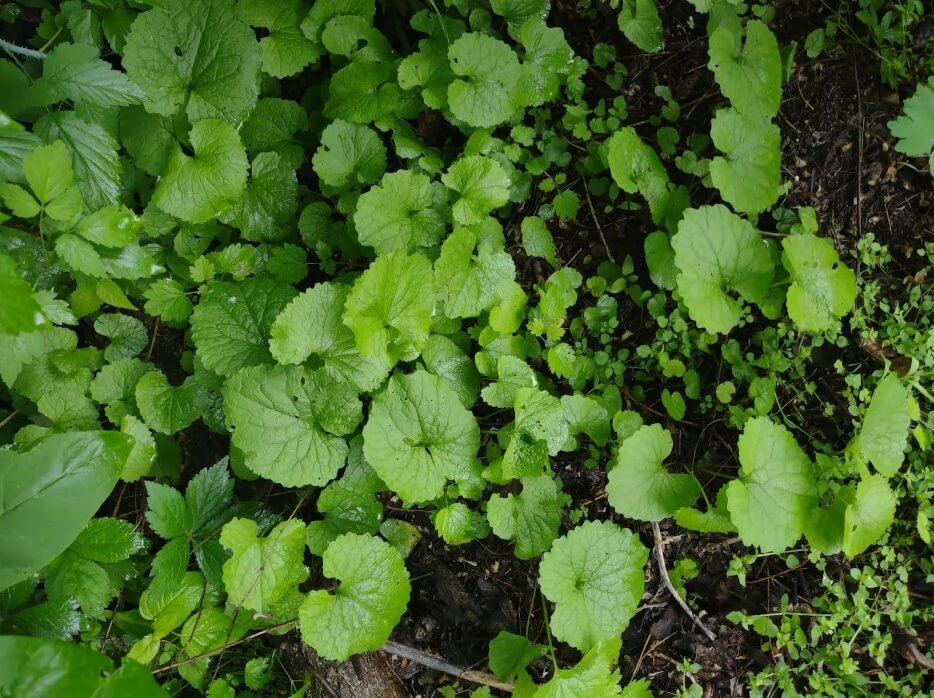
Lastly, it would be wrong of me to not include Garlic Mustard, Alliaria petiolata. This plant is highly invasive in our area, so if you find this plant in your garden, or even on a hike, make sure to remove the entire plant thoroughly.
Garlic mustard is very easy to identify; it has ruffled, wavy leaf margins with a lily pad shape. It also, unsurprisingly, smells very strongly of garlic. I have made a pesto from this garden terror, and it tastes a lot like horseradish. It’s a very good plant to use as an herb in your kitchen!
A short disclaimer: Please be responsible when consuming foraged goods, even from your backyard. Only eat plants you can positively identify for certain, and never eat plants that have been sprayed with pesticide.
I really enjoyed sharing this topic with you, and I hope you learned something new. If you want to learn more, there are plenty of amazing foraging books on the market, as well as fantastic online resources.
